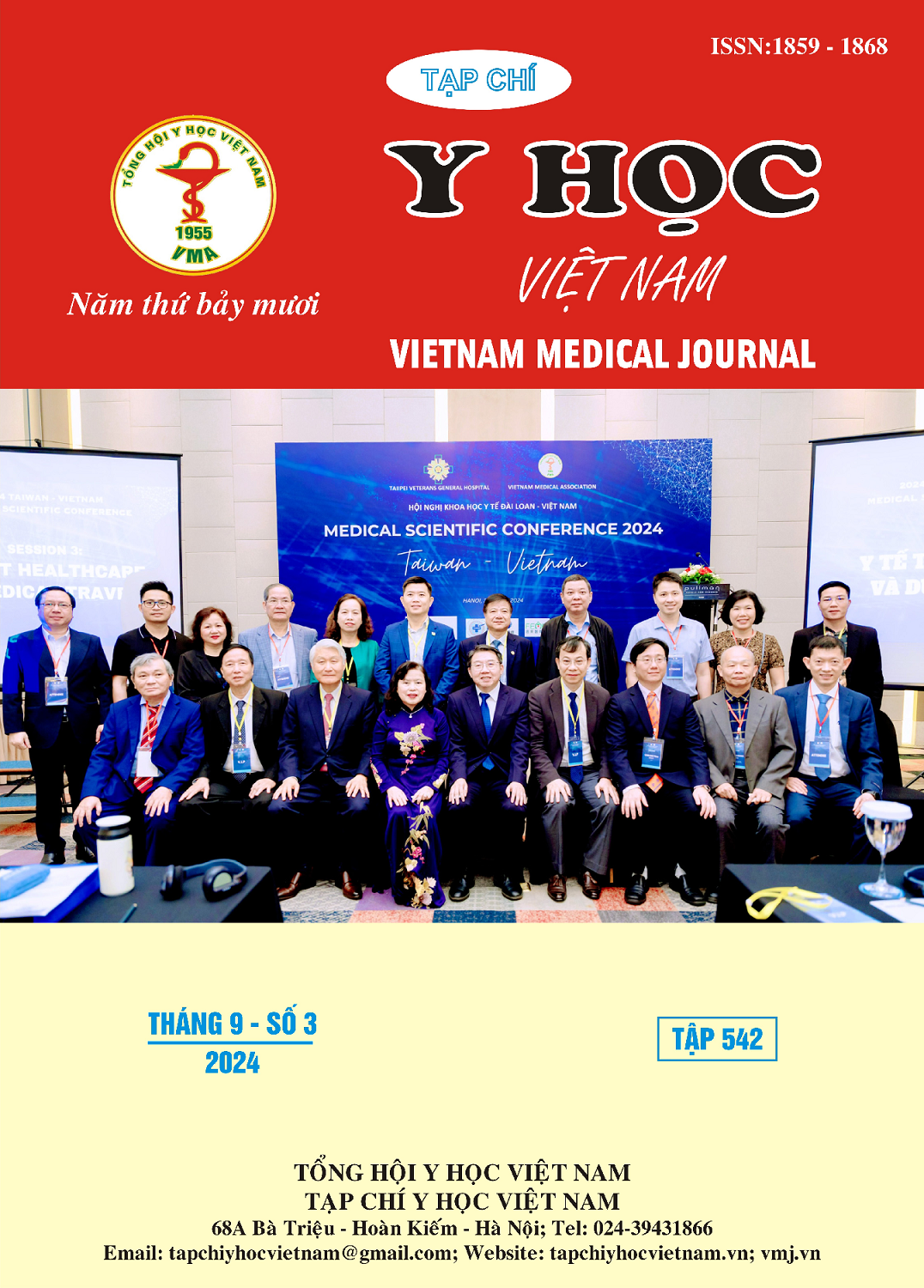CLINICAL CHARACTERISTICS, ETIOLOGIES AND COMPLICATIONS OF INFECTIVE ENDOCARDITIS AT THE CARDIOLOGY CENTER OF E HOSPITAL
Main Article Content
Abstract
Objective: To describe the clinical and paraclinical characteristics, etiology, and complications of infective endocarditis (IE) at the Cardiology Center of E Hospital. Material and methods: A retrospective cross-sectional study of 84 patients who was diagnosed of IE and treated at the Cardiology Center of E Hospital from January 2019 to March 2024. Result: Infective endocarditis on native valves and on prosthetic valves were 52.4% and 27.4% respectively. Common clinical presentations were fever (90.5%), cardiac murmurs (82.1%), shortness of breath (50%) and chest pain (44%). Vegetations were detected in 96.4% of patients on transthoracic and transesophageal echocardiography. Blood cultures were positive in 37 cases (44%), including Streptococcus (22 cases; 59.5%), Staphylococcus (10 cases; 27%), Enterococcus (4 cases, 10.8%), Enterobacter (1 cases; 2.7%). Complications included valvular regurgitation due to vegetations (72.6%), acute heart failure (50%), ruptured chordae tendineae (26.2%), cerebral infarction (11.9%), limb embolism (9.5%), cerebral hemorrhage (6%), and splenic infarction (6%). The proportion of serious illness patients who could not be cured was 4.8%.Conclusion: At the Cardiology Center of E Hospital, infective endocarditis was most commonly in native valves with Streptococcus and Staphylococcus as the most common pathogens. Complications with the highest proportion were valvular regurgitation due to vegetations, acute heart failure, embolism. Cerebral hemorrhage was a complication with a low proportion but was serious with high risk of mortality. Early detection and appropriate treatment of these complications can be lifesaving.
Article Details
Keywords
Infective endocarditis, etiologies, complications.
References
2. Iung B, Duval X. Infective endocarditis: innovations in the management of an old disease. Nat Rev Cardiol. 2019;16(10):623-635.
3. Habib G, Lancellotti P, Antunes MJ, et al. 2015 ESC Guidelines for the management of infective endocarditis: The Task Force for the Management of Infective Endocarditis of the European Society of Cardiology (ESC)Endorsed by: European Association for Cardio-Thoracic Surgery (EACTS), the European Association of Nuclear Medicine (EANM). European Heart Journal. 2015;36(44):3075-3128.
4. Management Considerations in Infective Endocarditis: A Review | Infectious Diseases | JAMA | JAMA Network. Accessed June 13, 2024.
5. Nguyễn Thị Thu Hoài, Phạm Minh Tuấn, Trần Bá Hiếu. Viêm nội tâm mạc nhiễm khuẩn tại Bệnh viện Bạch Mai, 2012 - 2017. Tạp chí Tim mạch học Việt Nam. 2019;(87):48-54.
6. Murdoch DR, Corey GR, Hoen B, et al. Clinical presentation, etiology, and outcome of infective endocarditis in the 21st century: the International Collaboration on Endocarditis-Prospective Cohort Study. Arch Intern Med. 2009;169(5):463-473.
7. Hoàng NN, Duy TC, Sỹ HV. Mối liên quan giữa đặc điểm vi sinh và kết quả điều trị ở bệnh nhân viêm nội tâm mạc nhiễm trùng. TC Tim mạch học VN. 2019;(88):61-68.
8. Lai HĐ. Nghiên cứu đặc điểm bệnh học viêm nội tâm mạc nhiễm khuẩn tại Bệnh viện Đà Nẵng trong 5 năm (2009 - 2014). TC Tim mạch học VN. 2014;(68):105-111.


